Friday, 3 June 2005
Distance 17 km
Duration 3 hours 40 minutes
Ascent 73 m, descent 89 m
Map 26 of the TOP 100 blue series (now superseded)
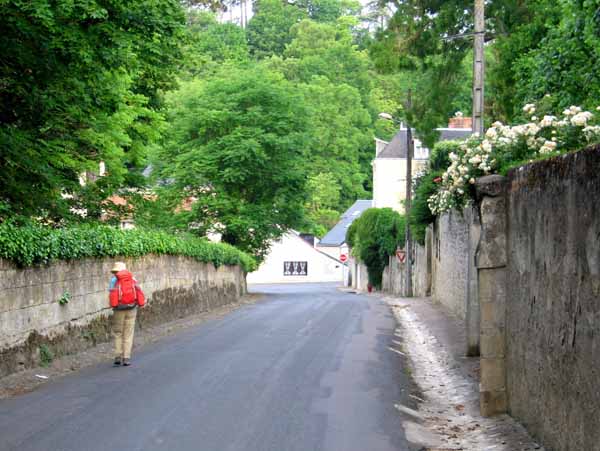
With unaccustomed promptness and without stopping for coffee, we left Vouvray on the well-marked GR3.
We walked at first through lanes lined with houses and then up a low cliff-line, past ancient dwellings embedded in the rock with their chimneys sticking up above like tree-stumps, onto the causse. This flat land was a carpet of vines under an immense sky, delightful to walk over in the coolness of the morning.
Descending the cliffs again, and crossing the highway, we picked up a footpath beside the river and followed it the rest of the way into Tours.
Looking to the left, past scrubby willows laced with driftwood, to the disorderly shallow stream weaving amongst sandbars, it was possible to imagine oneself in an age of mammoth-hunters and dolmen-builders.
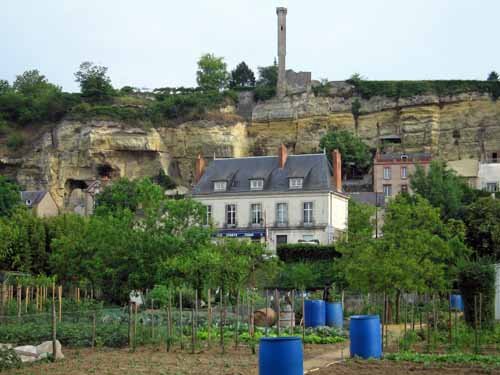
Looking to the right, a row of neat allotments stretched up to the houses, lovingly planted with vegetables, fruit trees and flowers, each with its blue water barrel. In a nation of gardeners, it is a pleasure to walk along back fences.
In due course, past the ruins of the fourth-century Abbey of Marmoutier, established by Saint Martin, the path went under a huge road-bridge, and we were in a city park, where a group of comatose teenagers lay in sleeping bags, surrounded by empty bottles.
After passing beneath another road, we came to a high footbridge (a replacement for the twelfth-century one which was washed away), and crossed the Loire in two stages, via an island, to the old centre of Tours.
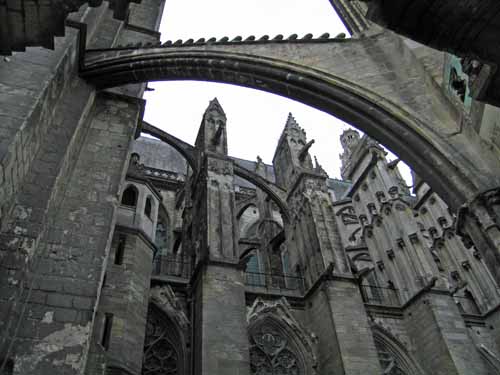
The cathedral of Saint-Gatien loomed over us. It was one of the first to be built in the Gothic style and still has great power, even hemmed in by more recent buildings as it is. The cloisters were being restored but were worth looking at.
Tours is the home of Saint Martin, one of the most energetic early disseminators of the Christian faith. He was a Roman, born into a military family in the fourth century, when Christianity was legal but still only a minor cult.
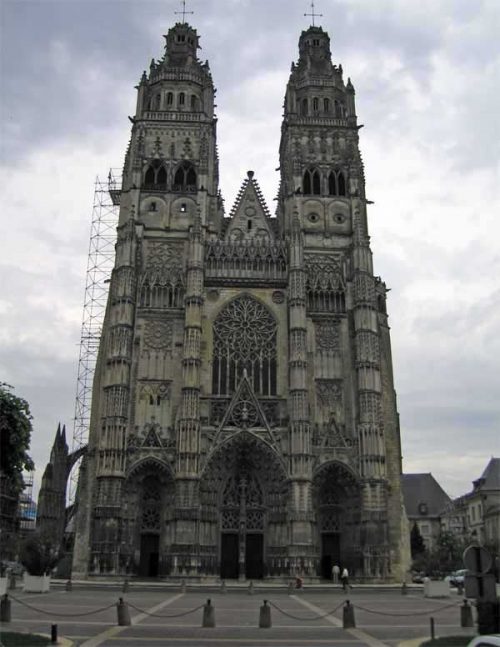
Posted to Amiens in a cavalry unit, he was confronted one day by a beggar, and impulsively cut his cloak in half to give to the shivering fellow. That night Jesus appeared to him in a dream wearing the half-cloak, and he became a whole-hearted believer.
From then on he devoted himself to the religious life and was assiduous in the conversion of the native population. Most of the Gaullish peasantry saw the error of their ways at the point of a sword, but then Saint Martin, together with later missionaries, would have said it was for their own good. He helped them along by destroying traditional shrines and holy places, and he ranged over an astonishing area of northern France in so doing.
By the time he died, Christianity was dominant in western Europe, although he was not solely responsible for this – the fact that the emperor Constantine had become a Christian may have had something to do with it. Tours was the centre of Saint Martin’s influence and remains so today, notwithstanding the many churches dedicated to him throughout western Europe.
Further on, we came to a wide, prosperous main street flocking with shoppers, and found a bar on the pavement where, with the addition of pastries from the adjoining boulangerie, we had a splendid second breakfast.
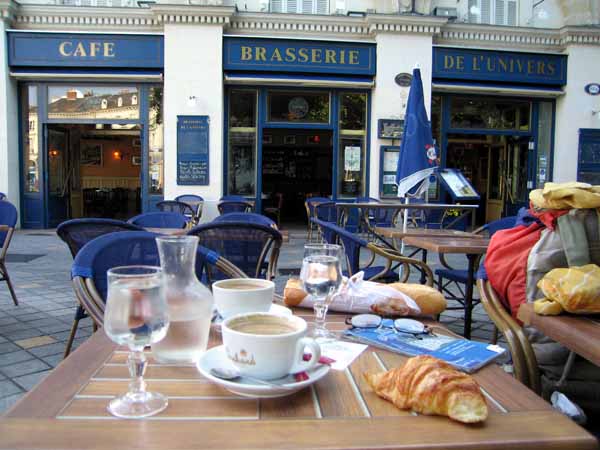
Near the railway station in another handsome boulevard, we found the Office of Tourism and not far away, an internet café, the biggest one in France, they claimed, a huge ill-lit bunker with rows and rows of screens manned by unhealthy looking mesmerised youths.
From here we sent our first email of the trip and got out into the fresh air as quickly as possible.
There were other things to see in Tours, such as the medieval quarter down on the river, and the tomb of St Martin, but we did not visit them as were continuing our walk, on the pilgrim’s Way of Tours.
Leaving Tours
There is a railway station in the centre of Tours. From there you can go to almost anywhere in France. Tours also has an airport.